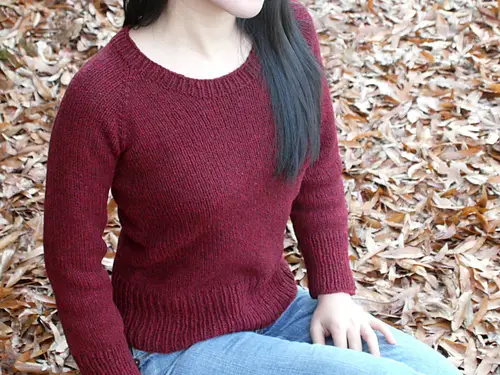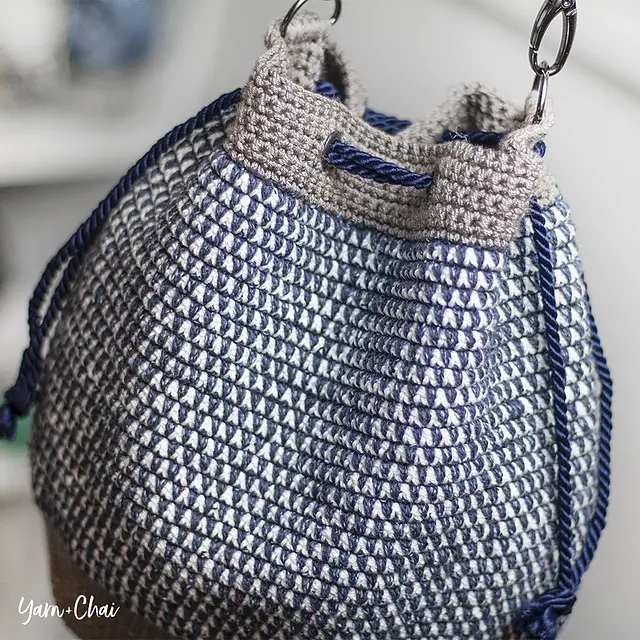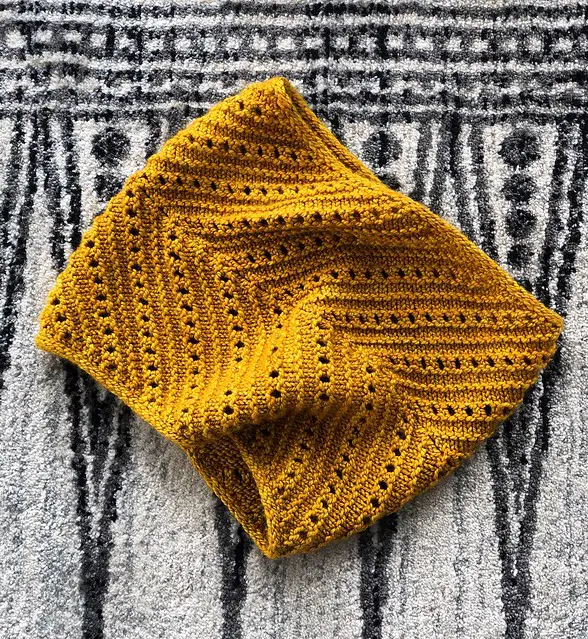Taking a trip to the craft store has always been one of my joys, especially when I get to take new skeins of yarn home. At the beginning, I tried every brand possible, but I always settled on the same category of medium weight yarn. There was something about the thickness and the texture that I liked.
Medium weight yarn is more commonly known as worsted or aran weight. As the name implies, it is a middle weight yarn that is a little thicker than DK yarn. Worsted weight yarn is probably the most popular yarn weight because it is easy to work with, fast to work up and can be used for nearly any project.
I know how difficult it can be to choose yarn when you are starting out. You just want to buy any skein that looks appealing and feels soft. But the yarn weight matters when you want a certain look to your project. Take a look at the projects above. They would not look that way if worsted weight yarn was not used. If you want to snag the free patterns, click their links (left to right): Brick by Clare Lee, Mosaic Bucket Bag by Rebecca Langford, Free For All Cowl by Jen Peck.
In my previous articles we learned about Lace Weight, Super Fine, Fine Weight, and Light/DK Weight yarn. In this one, I want to cover the next weight and what the industry means by “medium” or “worsted” yarn. I invite you to come along and learn with me!
Medium Weight Yarn Standards
The Craft Yarn Council (CYC) created a standard yarn weight system for the US. It is based on a number system that starts from 0, the thinnest, and goes up to 7, the thickest. Medium weight yarn is what the CYC considers a 4. Besides the numbering system, the CYC also gives guidelines for gauge and hook/needle sizes for medium weight yarn.
CYC Gauge and Tool Recommendations
Gauge, hook and needle suggestions for knit and crochet are printed on the labels. These are based on the testing done by the yarn manufacturers.
But the CYC put a set of guidelines for everyone (in the US) to use, which is listed below. The information is based off of the CYC website and you can access that here for more details.
| | Standard CYC Gauge* | CYC Recommended Tool Size |
| Knit | 16 – 20 sts stockinette | 4.5 – 5.5mm, 7 – 9(US) needles |
| Crochet | 11 – 14 sts sc | 5.5 – 6.5mm, I-9 – K10(US) hook |
Ravelry (an online database for crochet and knitting patterns) also provides a guideline for knit gauge. According to them, you should get 18 or 20 stitches per 4 inches (10 cm) for aran and worsted weights respectively. You can see that this is in align with what the CYC says.
Remember though, these are not exact. The gauge and hook/needle size provide you with a strong baseline, but you should always do your own testing.
Wraps Per Inch
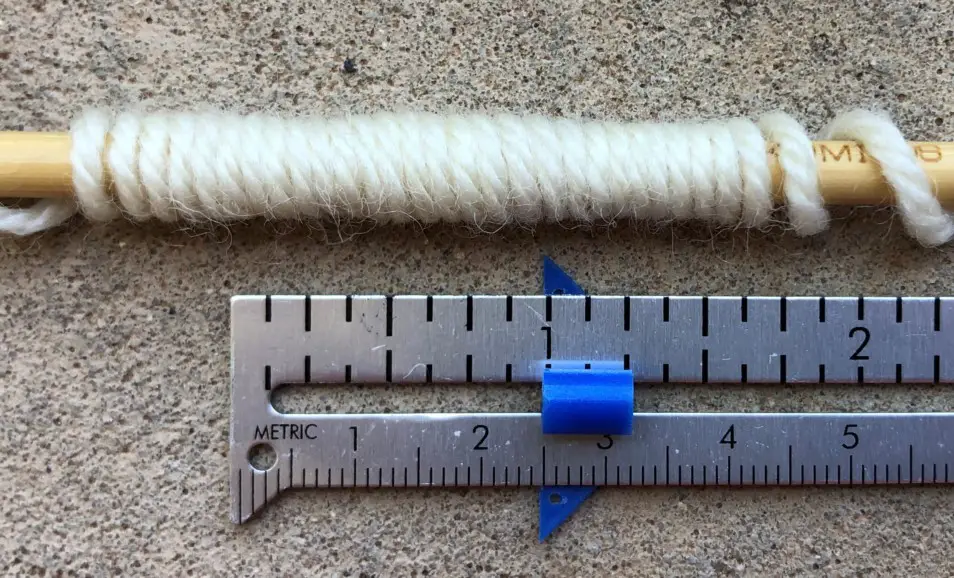
Wraps per inch (WPI) is useful for yarn weights if you ever lose your labels. Measuring WPI is super simple. The CYC has more detailed information on their website here. But basically you wrap yarn around a pencil. Then you measure an inch and count how many wraps are in that inch. Finally, you compare to the CYC standards for WPI to know what the yarn weight is.
The CYC states that medium weight (4) should have 9-12 wraps per inch. Ravelry also has a section for WPI on their yarn weight standards page. They state that 9 WPI should be expected for worsted weight and 8 WPI for aran. I will explain the difference between aran and worsted weights (I know this is the second time I’ve referenced them) in just a moment. Hold tight please!
Finally, another source, Bluprint, says that you can expect 9-11 WPI for medium weight yarns. This is almost exactly the same as what the CYC says. If you are curious, check out their article here.
I bought several skeins of worsted and aran weight yarns to test out dyes. So I measured the WPI for each type before dyeing. I got 16 wraps per inch for the aran weight yarn, which came from Dyer Supplier. I also purchased worsted weight yarn from Knit Picks and that measured 14 wraps per inch.
Neither of my category 4 weight yarns fell into the “worsted weight” WPI standards set by the CYC. I think this is because the yarns will fluff up after dyeing. However, I will have to test this out when I actually dye the skeins.
Other Common Terms for Medium Weight Yarn
As I mentioned previously, the CYC created the yarn weight system for the US. Medium weight is equivalent to a 4 according to their standards. But not everyone in the world uses the same terminology. I summarized the most common terms used for lace weight yarn below, and I will go into more detail about each.
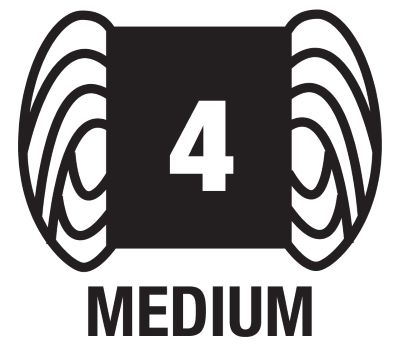
Also Known As
- Medium – 4
- Worsted
- Aran
- Heavy Worsted
- Afghan
- Triple Knit
- 10-ply
- 12-ply
In the US, and other countries, medium weight yarn is most commonly called worsted or aran yarn. Often, these terms are used interchangeably, but there can actually be differences in the yarn to be aware of. And I will also briefly mention the other less used terms listed above.
- Medium – 4. This is how the Craft Yarn Council refers to the middle weight yarn. The symbol above is what is printed on yarn labels in the US so that you can easily identify the yarn weight.
- Worsted. The term “worsted” used to refer to the way wool was spun into yarn. It meant that the wool fibers were combed parallel to each other during the spinning process to create a tight, uniform yarn. It’s counterpart, “woolen”, is combed differently and creates a puffier, less uniform yarn. But nowadays, according to those definitions, most yarn is worsted. So the term “worsted” is generally used to refer to the middle yarn weight category.
- Aran or Heavy Worsted. Aran is a term that is more often used in the UK and refers to the middle weight yarn. Aran yarns tend to be slightly thicker than worsted and give about a stitch or two extra per inch. Although, the the terms are typically used interchangeably. Ravelry has separate categories for worsted and aran, so I think it is an important distinction to make.
- Afghan. I honestly don’t know how often people refer to medium weight yarn as “afghan” yarn. I have never heard anyone call it that. But, I can imagine it is called that because many afghans are made out of this particular yarn weight.
- Triple Knit. I found this term listed on only one yarn weight comparison chart here. So I’m not sure it is a term used any more.
The UK, Australia and New Zealand are known to refer to yarn weights by plies. The lower the ply count, the thinner the yarn. Although, don’t confuse this with how many plies the yarn is actually composed of. Ply count used to refer to the number of strands in the yarn, but modern processes have changed that. Now the term ply simply means the thickness of the yarn, when referring to yarn weights.
I looked at several sources to hopefully give the most accurate information, as I live in the US and don’t use this notation for yarn weights. This is what I found.
- 10-ply. I found a couple of sources that say that Australia and New Zealand both use 10-ply to refer to the medium weight category of yarn that is equivalent to worsted weight yarn. Ravelry also states the same.
- 12-ply. I found one yarn site from New Zealand that lists 12-ply as a common term for medium weight yarn.
If you live in one of the areas that uses ply to determine yarn weight, please let me know if I should update this section!
Important Properties of Medium Weight Yarn
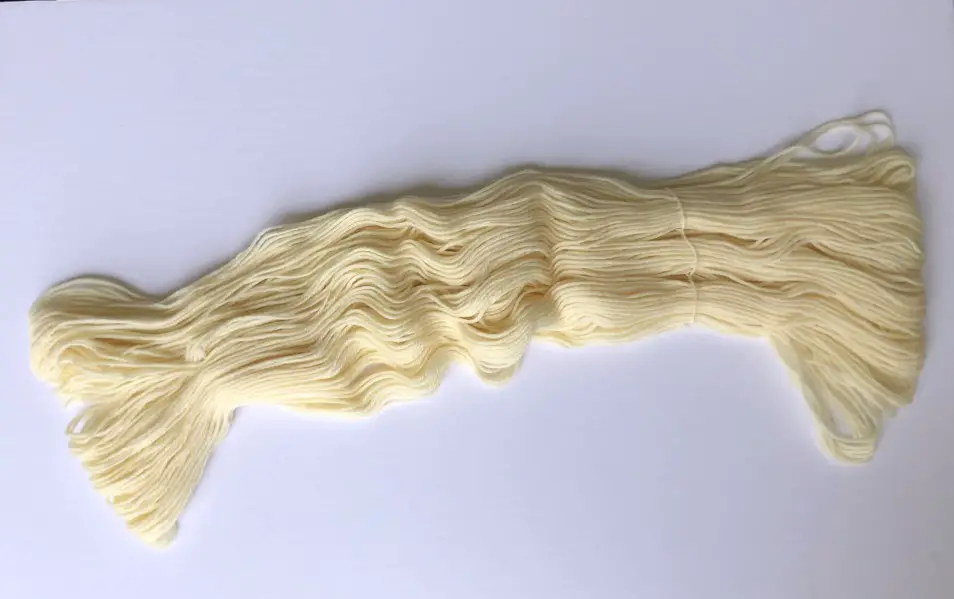
Medium weight yarn has several important properties that affect every purchaser of yarn. First there is fiber content. It is important to know what fibers the yarn is made from so you know how to treat it for your projects. Next, the yardage is important because that affects the project size. Finally, the price of the yarn is an important property that affects whether or nor you buy it.
Throughout these next sections, I dive deeper into each property of medium weight yarn. In order to do so, I conducted my own research. I looked at five major yarn companies so I could understand more about industry behaviors regarding yarn weights. I hope you find it interesting!
Common Fiber Content
I like to break fiber content into three categories: natural fibers, synthetic fibers, and blends of natural and synthetic fibers. According to my research, 22% of medium weight yarn is made from natural fibers and 56% is made from synthetic fibers. The other 22% is a blend of natural and synthetic fibers.
This makes sense because medium weight yarn is very popular because it can be used for probably any project. More synthetic fibers are available for this category of yarn because they are cheap and easy to wash. The perfect combination for almost any project.
Acrylic is the most popular synthetic fiber followed by polyester. I have summarized the common fibers below so you can get an idea of what else is out there. I didn’t add the blends though because that can vary.
Natural Fibers
- Wool
- Superwash Wool
- Merino
- Cashmere
- Mohair
- Silk
- Cotton
- Alpaca
- Yak
- Linen
- Hemp
Synthetic Fibers
- Acrylic
- Polyester
- Polyamide
- Rayon
- Nylon
- Viscose
- Modal
Yardage Estimation
When it comes to yardage, unfortunately there is no set standard for the amount of yards per ounce/gram. That is up to the yarn manufacturer. But I was curious, just as I am sure you are, how many yards I can expect on average for mdium weight yarn. This is super important when planning for a pattern.
As I stated before, I looked at 5 major yarn companies in the US. The following is based on my findings. For medium weight yarn, you can expect 281 yards per skein on average. The lowest amount of yardage I came across was 64 yards and the highest was 1090 yards.
Average Price
Price is also an important aspect to keep in mind when you are choosing and comparing yarn. I found that you can expect to pay on average $6.95 per skein of medium weight yarn. Of course, that also means you could pay much more or much less depending on where you shop.
Where to Find Medium Weight Yarn
Medium weight yarn can be found in many places. All major craft stores will carry medium weight yarn. In fact, this is the most popular yarn weight to have in stock.
If you have a locally owned yarn shop in your area, you would have a much bigger selection of medium weight yarn to choose from. I, however, don’t have that luxury, but wish I did.
Finally, you can always buy medium weight yarn online. There are many yarn retailers that have worsted and aran weight yarns for sale. The only drawbacks are that you must wait for its arrival (so hard!) and you can’t feel the yarn before purchasing.
Types of Projects Best for Medium Weight Yarn
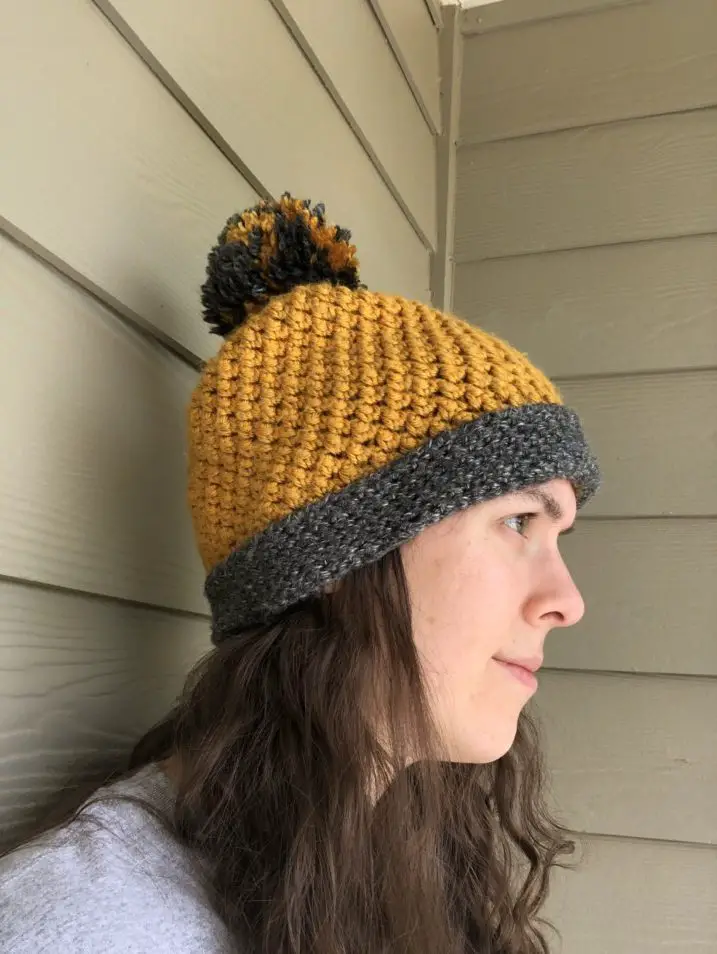
Medium weight or worsted or aran, whatever you want to call it, is a great yarn choice for any type of project. You can make clothes, blankets, bags, hats, shawls, etc. You name it, you can probably make it.
Medium weight yarn produces a fabric that is thick and sturdy. It is a yarn weight that will not wear easily. There is not much drape any more with medium weight thickness.
To illustrate it’s popularity, Ravelry has 312,048 patterns (at the time of this post) that uses worsted or aran weight yarn. I think it’s safe to say that medium weight yarn is the most used yarn. You will no doubt find a project that you like.
I compiled a list of all the project types I could think of that pair well with medium weight yarn. You are by no means limited to these projects, but I hope they spark some sort of inspiration!
Garments
- Cardigans
- Sweaters
- Shawls
- Tank Tops
- Ponchos
- Slipper Socks
Accessories
- Scarves
- Cowls
- Gloves
- Hats
- Ear Warmers
- Leg Warmers
- Backpacks
- Bags/Purses
- House Slippers
Home
- Dish Cloths
- Pot Holders
- Blankets/Afghans
- Amigurumi Stuffed Animals
Medium Weight Yarn Recommendations + Tips
As I have mentioned several times by this point, medium weight yarn is the most popular of the yarn weights. I have tried so many different yarns within the medium-4 category. These are a few of my favorites:
- Lion Brand Heartland
- Lion Brand Vanna’s Choice
- Lily Sugar’n Cream
- Lion Brand 24/7 Cotton
- Paton’s Classic Wool
Tips:
- Go up or down a hook or needle size. It depends on the fabric texture that you want. If you go up tool sizes, the fabric will have more drape to it and not be so stiff. But play around with it and find a texture that you like.
- Make a swatch for everything. Just because you buy Lion Brand medium-4 yarn in Heartland doesn’t mean it will have the same gauge as 24/7 Cotton. It is always smart to test gauge every time because all fibers react differently.
Up Next
That concludes Medium Weight yarn (4). The next post covers Bulky Weight yarn (5), which is the next size up. You can find it here.
The pictures listed at the top of the post are available in pattern form free through Ravelry. I do not claim these photos as my own, they are merely for illustration purposes. Click the links here to find the free patterns: Clare Lee, Rebecca Langford, Jen Peck.

